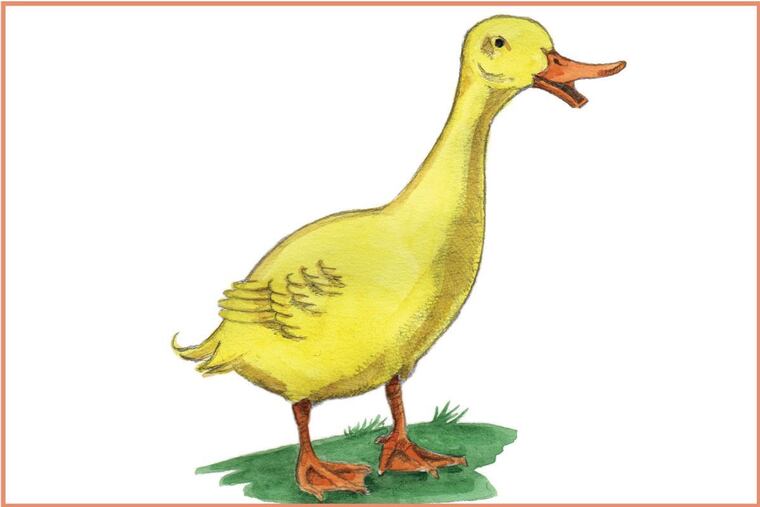Calling all kids! Draw this cute duck for a chance to see your artwork published
Follow the directions for drawing this cute duck and submit your work to the Inquirer and Daily News.

There are more than 120 species of ducks in the world, and they come in a variety of colors and patterns. The males, which are called "drakes," are generally more colorful than the hens.
A duck has amazing eyesight. It can bend the shape of its cornea to see more than twice as far as a human can. It's like having a built-in pair of binoculars!
Ducks can also sleep with one eye open and alert to danger.
Ducks are useful to humans in many ways. They help gardeners by eating flies, grasshoppers, slugs, and snails — without touching the vegetables. Their down is used in pillows, comforters, and winter coats.
Follow the directions to draw this cute duck, and you'll have a chance to see your artwork published in the Philadelphia Inquirer and Daily News on Sept. 1, 2018. (And if you have time, click this link to learn to draw a fancy luna moth, too.)
Details for submission are below. Happy drawing! We’ll post another art lesson next week.
1. Be sure to leave enough room for the beak and feet before placing the ovals that form the head and body of the duck. Notice the tilt of the bottom oval. The back of the neck is a gentle arc, and the front of the neck is more 's' shaped. Observe where the narrowest part of the neck is. The tail ends in a curl.
2. The duck's eye is far back on its head. The top of its beak is a concave arc. The bottom of the beak is a smaller arc. Ducks have three forward-facing toes. It may help to think of the middle toe as an extension of the leg. A dewclaw is visible on the leg on the right.
3. Erase any extra guidelines. Now we add some detail and shading. The long flight feathers are just above the tail. The roots of these are covered by rows of smaller feathers. We have shaded the front of the neck and bottom of the belly. Texture and shading on the feet complete the pencil work.
4. You are now ready to apply color to your duck. We've used watercolor, but you can use markers or colored pencils. If you like, add a landscape in the background. Perhaps a pond, a field, or a garden would make the duck happy.
How to submit your artwork
Children are invited to send or email copies of their work to us at the address or the email below. Phone pictures are fine. One drawing weekly will be selected for
publication on Sept. 1 and the selected artists will receive a prize.
Be sure to include your name, age, mailing address, and email or phone number.
Send to:
Arts Editor Becky Batcha
Philadelphia Inquirer
801 Market St.
Phila., PA 19107
Email: batchab@phillynews.com